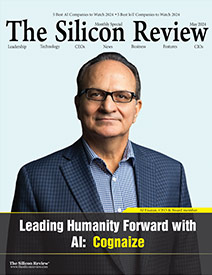>>
Technology>>
Science and technology>>
What Impact Does Broadband Tec...What Impact Does Broadband Technology Have on the Construction Industry?
The Silicon Review
30 September, 2020
Innovation like the Internet of Things (IoT), construction site broadband and 5G is changing how the construction industry functions, permitting organisations to turn out to be quicker, brilliant, more secure, and more productive all in one.
The business has entered another period of digitalisation through IoT and other empowering innovations. IoT gadgets are not, at this point merely primary sensors like QR codes, yet they are developing into cutting edge computers, which are prepared to do new and demanded applications in the construction business. For example, supply replenishment, remote operation, construction tools, equipment tracking, equipment servicing, repair, remote usage monitoring, and quality monitoring among others.
Indeed, there’s a developing requirement for broadband technology.
Early adopters in the business are now utilising broadband technology like IoT and 5G technology but in a divided method. There’s no evolved biological system for all-round coordinated business support, basically because of an absence of quick, reliable and vigorous connectivity choices that can deal with communication from several areas.
Possible Broadband Technology Use Cases in Construction
Ongoing Robotisation
Real-time mechanisation is one of the most well-known sections of construction applications. It comprises independent applications like automated masons, cranes and welders that make use of information from sensors to carry out explicit activities. It’s frequently utilised in crucial applications, where latency, accessibility, dependability, and security are of essential significance.
Since building sites are an unpredictable and continually evolving environment, the industry can depend on broadband technology like 5G to make decisions on worksites immediately and to perform distant or machine-controlled tasks. Joined with high correspondence speeds, this will give those working quick access to information and cloud applications, empowering various clients to communicate with one another continuously, and distantly.
While unwavering quality and trust are vital parts of all IoT applications, they’re of most extreme significance in crucial applications, for example, the immediate and consistency of information delivered to robots and this can only be successfully implemented using stable broadband technology.
Monitoring, surveillance and tracking
Self-driving vehicles are picking up noticeable fame at building sites, joined with information gathered and implemented from a wide range of sensors, including structural health, concrete maturity, area, climate, IP and GPS cameras.
With the coming of 5G, this data will get essential as organisations and urban communities overlay different technologies, for example, machine learning and AI, onto real-time data output while transforming how to function securely and effectively.
Optimisation of Supply chain
The construction site has a ton of monotonous actions, and chasing for materials is a steady test. Self-driving cars, RFIDs, BLE (Bluetooth Low Energy) computer vision, or other computerised apparatuses can be utilised to help address such issues. If materials can show upon request, it will significantly improve productivity.
Upgraded Video Services:
Regarding video capture, broadband technology will likewise help companies cheaply send innovation to rapidly capture, arrange and dissect monstrous volumes of video data. This lessens the requirement for certain groups to try and visit the building site. Further, this sort of constant, rich, visual data can give assurance to the proprietor and as an on-request detailed view on the building project at a specific second in time.
Drones are now being utilised to take 4K video film, and 5G broadband, for instance, will empower constant video sharing and investigation. Construction status would now be able to depend on the utilisation of computer vision to follow along on the project and immediately update progress on the project.
Risk and Maintenance Monitoring
Visual information can assist us with recognising risk immediately and proactively mediate to decrease mishaps on the job. Videos, as opposed to static pictures, can help smooth out assessments, records, reviews, safety reviews, as-built, and even consistency. Broadband technology empowers visual information. Images make us responsive. In a proactive situation, information capture is computerised, proceeds through different sources, and is broken down continuously.
Promoting Collaboration
We see an expanding number of collaboration between companies as construction projects become more complex. Sharing information is currently significant, internally as well as with peers. Usually, we are attempting to tackle similar issues with a similar arrangement of assets (vendors, design, and so on). Broadband technology makes this cycle a lot simpler.
Conclusion
With regards to construction, broadband technology capabilities open up a limitless number of innovative use cases. Information gathered at the site can be perceived and followed up on in real-time.
High transmission capacity and low-latency times guarantee more details than any other time in recent memory can be rapidly and effectively gathered and studied, with expanded insight into each system at a time. The incorporation of broadband technology and IoT can help construction companies to improve profitability, health safety, and remain consistent.









